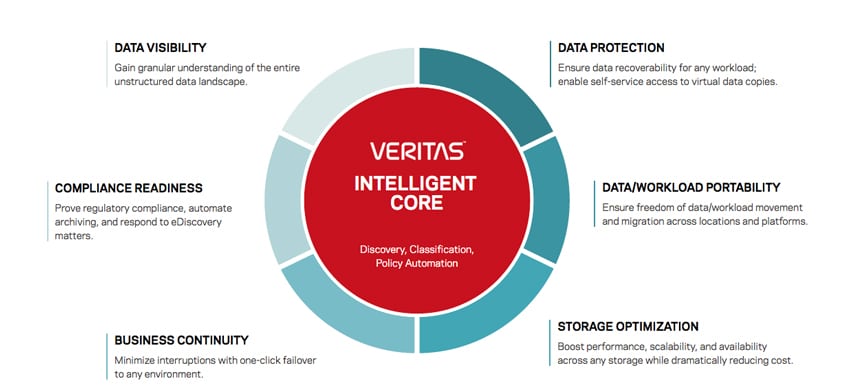Building off of new alliances and partnerships the company has made with Google, IBM, and Microsoft, Veritas Technologies today announced new solutions for multi-cloud environments. According to Veritas, the new solutions are designed to provide organizations unprecedented visibility into cloud-based data, bi-directional cloud migration for critical workloads and snapshot-based data protection optimized for multi-cloud environments.
Building off of new alliances and partnerships the company has made with Google, IBM, and Microsoft, Veritas Technologies today announced new solutions for multi-cloud environments. According to Veritas, the new solutions are designed to provide organizations unprecedented visibility into cloud-based data, bi-directional cloud migration for critical workloads and snapshot-based data protection optimized for multi-cloud environments.

Not only is cloud adoption and utilization growing in organizations, multi-cloud (as the name implies, the use of two or more clouds to pool more benefits or backup between the clouds) is also rapidly increasing. According to IDC, 90% of enterprise organizations plan to utilize multi-cloud architectures over the next few years. If the estimate is correct it will radically drive up the use and adoption of multi-cloud, but that may just compound some of the issues that come with multi-cloud. These issues can include: lack of data visibility, complicated migration paths that also frequently result in cloud lock-in, a mistaken perception that because data is in the cloud, it does not need to be protected, not to mention governance issues for data that may reside in several places at once. Veritas’s new solutions aim to address theses issues.
Veritas is introducing a new Information Map S3 Connector that will enable visibility of cloud-based data. Veritas states that the connector will provide a real-time picture and interactive view of their unstructured data assets that reside in S3-enabled cloud storage repositories. Increased visibility lets organizations make better decisions on where data needs to be stored, whether or not it needs to be backed up, and whether or not it can be deleted. The new connector will also help enterprises comply with the General Data Protection Regulation (GDPR) which takes effect in May, 2018. Veritas found that only 1 in 10 enterprises believe that GDPR compliance is their responsibility. Under GDPR, organizations are just as responsible for adhering to the same data privacy mandates for data stored in the cloud – including any public cloud – as well as data stored on-premises.
To help enterprises safely and secure migrate workloads, Veritas is introducing its CloudMobility. With Veritas CloudMobility companies will be able to migrate complex workloads to the cloud or from the cloud back to on-premises through a single click. A big concern of migrating workloads is what if something goes wrong? Waiting for something to fail is no answer so CloudMobility offers a pre-migration testing so user will know what to expect before hand.
Veritas is also offering protection in multi-cloud environments with CloudPoint. CloudPoint leverages snapshot-based data protection to solve aggressive data recovery objectives and institute consistent data protection policies, regardless of where the workloads are located. To help customers avoid vendor lock-in and data silos, CloudPoint’s snapshot technology works across multi-cloud environments.
Availability
The Veritas Information Map S3 Connector and CloudMobility are available now. Veritas CloudPoint is expected to be available in the coming quarters.
Sign up for the StorageReview newsletter
